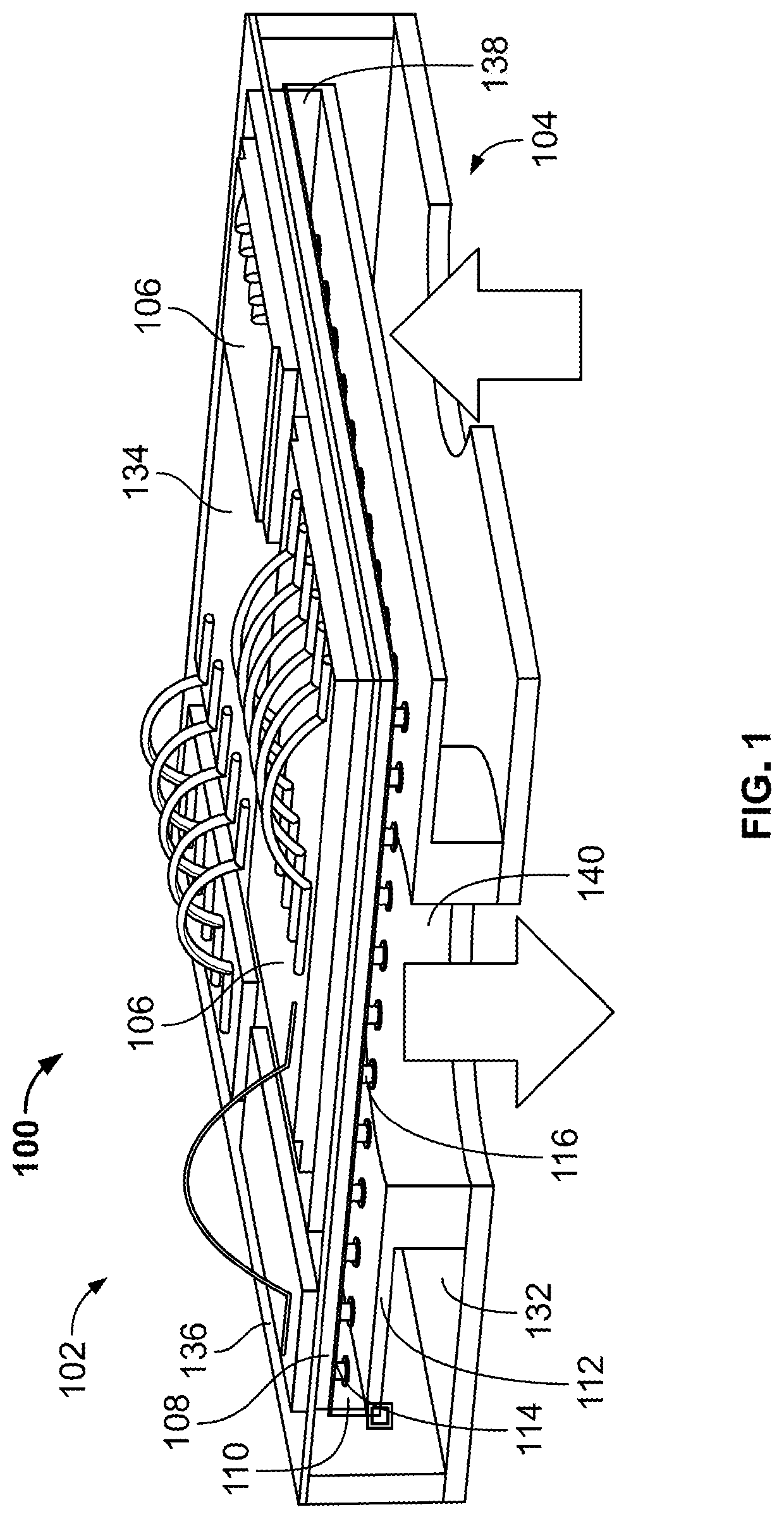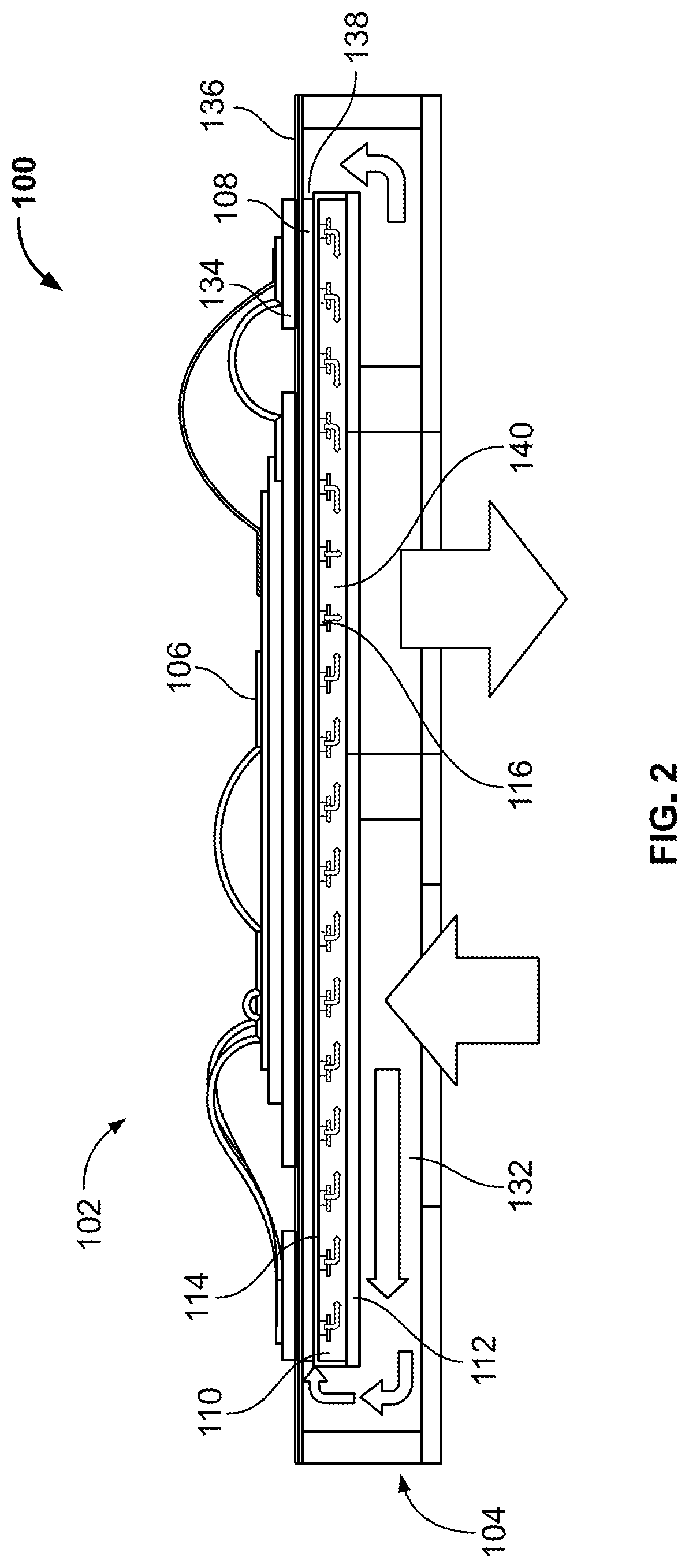Methods and systems for evaporation of liquid from droplet confined on hollow pillar
a technology of droplet and liquid, which is applied in the field of liquid evaporation, can solve the problems of dielectric liquid, design aspects of electronic devices such as shape and size are limited, and current thermal management systems are not completely satisfactory in dissipating relatively high amounts of heat generated by electronic devices
- Summary
- Abstract
- Description
- Claims
- Application Information
AI Technical Summary
Benefits of technology
Problems solved by technology
Method used
Image
Examples
example 1
Fluid (VOF) Modeling of Microdroplets on Circular, Square, and Triangular Micropillars
[0123]In various aspects, a Volume of Fluid (VOF) numerical model is used to characterize the evaporation behavior of non-axisymmetrical microdroplets suspended on a hollow micropillar. In one aspect, the VOF model is used to characterize the heat and mass transfer over a non-axisymmetric microdroplet meniscus formed at the outlet of a hollow micropillar. In some aspects, equilibrium profiles and mass transport characteristics of droplets with circular, triangular, and square contact shapes are characterized using the Volume of Fluid (VOF) method. In one aspect, the VOF model is based on a volume of fluid (VOF) multiphase method that accounts for microconvection effects within the droplet and evaporative phase change transport at the liquid-vapor interface, and further provides representation of the vapor diffusion process in the air domain. In an aspect, evaporative mass transport at the liquid-va...
example 2
e Pinning / De-Pinning of Droplet Contact Lines Advancing Along Sharp Edges with Varying Angle and Roundness
[0182]To assess the characteristics of microdroplet pinning and unpinning along sharp substrate edges on a microscale, the following experiments were conducted.
[0183]Geometric edge features 905 with different edge angles and roundness were fabricated using lithography and etching techniques to produce different edge angle and roundness features. Specifically, T-shaped microchannels were fabricated on a plain silicon substrate with acute, right, or obtuse turning angles as shown in FIG. 39. The edge radius of curvature at these sharp edges was varied from ˜100 nm, ˜1 μm to ˜10 μm by changing the photolithography mask and controlling the developing / etching process. In order to achieve the high resolution (<1 μm) to distinguish the different degrees of roundness, laser scanning lithography was used to produce the target feature on the deposited photoresist material. By employing a ...
example 3
let Evaporation from a Hollow Micropillar
[0185]A multiphase flow numerical simulation for observing microdroplet evaporation from a hollow micropillar was demonstrated. Factors in modeling droplets included vapor domain, liquid domain, pressure outlet, vapor diffusion, heat flux wall, axis, and the liquid-solid barrier. Measurements taken included temperature, surface tension, and angular position and observing the triple-phase contact line (TPL) in association to the axis of the micropillar (see FIG. 40). The evaporation rate along the menisci (water) was demonstrated observing the triple-phase contact (TPL) line in association to the axis of the micropillar as well (see FIG. 41). The average transfer coefficient versus the boundary heat flux were calculated (see FIG. 41). It was concluded that the evaporation from thin-film droplet allowed for average heat transfer coefficient exceeding 106 W m−2 K−1 (table below). The highest rate of evaporation was located at the TPL. Models of ...
PUM
 Login to View More
Login to View More Abstract
Description
Claims
Application Information
 Login to View More
Login to View More - Generate Ideas
- Intellectual Property
- Life Sciences
- Materials
- Tech Scout
- Unparalleled Data Quality
- Higher Quality Content
- 60% Fewer Hallucinations
Browse by: Latest US Patents, China's latest patents, Technical Efficacy Thesaurus, Application Domain, Technology Topic, Popular Technical Reports.
© 2025 PatSnap. All rights reserved.Legal|Privacy policy|Modern Slavery Act Transparency Statement|Sitemap|About US| Contact US: help@patsnap.com



